
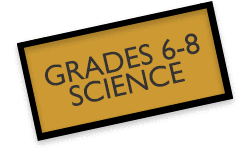

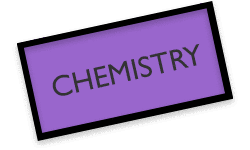
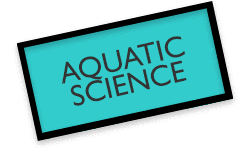
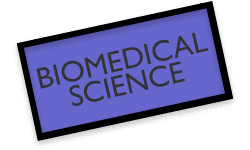
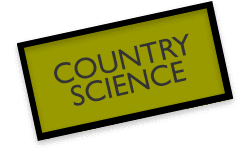
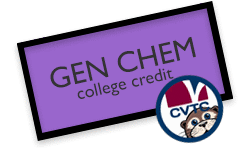
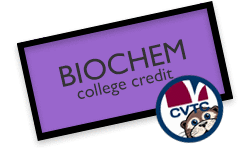


Welcome to Aquatic Science! Aquatic Science is the multidisciplinary (e.g., biology, chemistry, physics, geology, etc.) study of Earth's oceanic and freshwater ecosystems. [close]
About Aquatic Sci: Learning Tools | Course Description & Competencies | School Supply List
The 2024-2025 Syllabus will tell you what you need to know to be successful.
Our Assignment Board is where you can find our calendar of learning events.
We will be using Google Classroom as our Learning Management System (LMS). It will help us to organize our lesson details and e-materials.[top]
Course Description & Competencies
Course Description
AQUATIC SCIENCE
Credit: 0.5 GHS Credit
Grade level: 10-12
Prerequisite: Biology, Chemistry recommended
Length: one semester
This course explores marine and freshwater sciences.
- Marine course topics may include the geography and geology of ocean basins; chemistry of sea water; physical dynamics of currents, waves, and tides; coastal processes; biology of diverse ecosystems such as deep sea hydrothermal vents, coral reefs, rocky intertidal zones, and estuaries; and human effects on marine environments.
- Freshwater course topics may include the hydrologic cycle, water quality, freshwater ecosystems, lotic habitats (e.g., streams, groundwater), lentic habitats (e.g., ponds, lakes, wetlands), as well as freshwater fish, mammals, amphibians, and waterfowl.
Investigations and field studies will be numerous, allowing for growth of not only aquatic science knowledge, but also scientific practice. Examples of hands-on opportunities may include live organism studies, dissections, and water quality field studies, to name a few.
Course Competencies
Upon successful completion of this course, students will tentatively be able to satisfy a portion of the following Wisconsin Standards for Science Disciplinary Core Ideas. (NOTE: Engineering, Technology, and the Application of Science DCI will also be covered, but are not listed in detail.)
- Standard SCI.LS1: Students use science and engineering practices, crosscutting concepts, and an understanding of structures and processes (on a scale from molecules to organisms) to make sense of phenomena and solve problems.
- SCI.LS1.C.h, Organization for Matter and Energy Flow in Organisms
The molecules produced through photosynthesis are used to make amino acids and other molecules that can be assembled into proteins or DNA. Through cellular respiration, matter and energy flow through different organizational levels of an organism as elements are recombined to form different products and transfer energy.- SCI.LS1.D.h, Information Processing
Organisms can process and store a variety of information through specific chemicals and interconnected networks.
- Standard SCI.LS2: Students use science and engineering practices, crosscutting concepts, and an understanding of the interactions, energy, and dynamics within ecosystems to make sense of phenomena and solve problems.
- SCI.LS2.A.h, Interdependent Relationships in Ecosystems
Ecosystems have carrying capacities resulting from biotic and abiotic factors. The fundamental tension between resource availability and organism populations affects the abundance of species in any given ecosystem. The combination of the factors that affect an organism's success can be measured as a multidimensional niche.- SCI.LS2.B.h, Cycles of Matter and Energy Transfer in Ecosystems
Photosynthesis and cellular respiration provide most of the energy for life processes. Only a fraction of matter consumed at the lower level of a food web is transferred up, resulting in fewer organisms at higher levels. At each link in an ecosystem, elements are combined in different ways, and matter and energy are conserved. Photosynthesis and cellular respiration are key components of the global carbon cycle.- SCI.LS2.C.h, Ecosystem Dynamics, Functioning, and Resilience
If a biological or physical disturbance to an ecosystem occurs, including one induced by human activity, the ecosystem may return to its more or less original state or become a very different ecosystem depending on the complex set of interactions within the ecosystem.- SCI.LS2.D.h: Social Interactions and Group Behavior
Group behavior has evolved because membership can increase the chances of survival for individuals and their genetic relatives.
- Standard SCI.PS1: Students use science and engineering practices, crosscutting concepts, and an understanding of matter and its interactions to make sense of phenomena and solve problems.
- SCI.PS1.A.h, Structures and Properties of Matter
The sub-atomic structural model and interactions between electric charges at the atomic scale can be used to explain the structure and interactions of matter, including chemical reactions and nuclear processes. Repeating patterns of the periodic table reflect patterns of outer electrons. A stable molecule has less energy than the same set of atoms separated; one must provide at least this energy to take the molecule apart.- SCI.PS1.B.h, Chemical Reactions
Chemical processes are understood in terms of collisions of molecules, rearrangement of atoms, and changes in energy as determined by properties of elements involved.- Standard SCI.PS3: Students use science and engineering practices, crosscutting concepts, and an understanding of energy to make sense of phenomena and solve problems.
- SCI.PS3.A.h, Definitions of Energy
Systems move towards more stable states.- SCI.PS3.B.h, Conservation of Energy and Energy Transfer
The total energy within a system is conserved. Energy transfer within and between systems can be described and predicted in terms of energy associated with the motion or configuration of particles (objects).- SCI.PS3.D.h, Energy in Chemical Processes and Everyday Life
Photosynthesis is the primary biological means of capturing radiation from the sun; energy cannot be destroyed, but it can be converted to less useful forms.- Standard SCI.PS4: Students use science and engineering practices, crosscutting concepts, and an understanding of waves and their applications in technologies for information transfer to make sense of phenomena and solve problems.
- SCI.PS4.A.h, Wave Properties
The wavelength and frequency of a wave are related to one another by the speed of the wave, which depends on the type of wave and the medium through which it is passing. Waves can be used to transmit information and energy.- SCI.PS4.B.h, Electromagnetic Radiation
Both an electromagnetic wave model and a photon model explain features of electromagnetic radiation broadly and describe common applications of electromagnetic radiation.- Standard SCI.ESS1: Students use science and engineering practices, crosscutting concepts, and an understanding of Earth's place in the universe to make sense of phenomena and solve problems.
- SCI.ESS1.C.h, The History of Planet Earth
The rock record resulting from tectonic and other geoscience processes as well as objects from the solar system can provide evidence of Earth’s early history and the relative ages of major geologic formations.- SCI.ESS2.A.h, Earth Materials and Systems
Feedback effects exist within and among Earth's systems.- SCI.ESS2.C.h, The Roles of Water in Earth's Surface Processes
The planet's dynamics are greatly influenced by water's unique chemical and physical properties.- SCI.ESS2.D.h, Weather and Climate
The role of radiation from the sun and its interactions with the atmosphere, ocean, and land are the foundation for the global climate system. Global climate models are used to predict future changes, including changes influenced by human behavior and natural factors.- SCI.ESS3.D.h, Global Climate Change
Global climate models used to predict changes continue to be improved, although discoveries about the global climate system are ongoing and continually needed.[top]
- Provided by Student:
- one college ruled composition-style notebook
- pencils
- Full Classroom Set Provided by Teacher:
- markers
- colored pencils
- scissors
- glue
- Partial Classroom Set Provided by Teacher:
- scientific calculator, similar to TI-30Xa
[top]
GO PIRATES!
Gilman Middle/High School
325 N Fifth Ave
Gilman, WI 54433